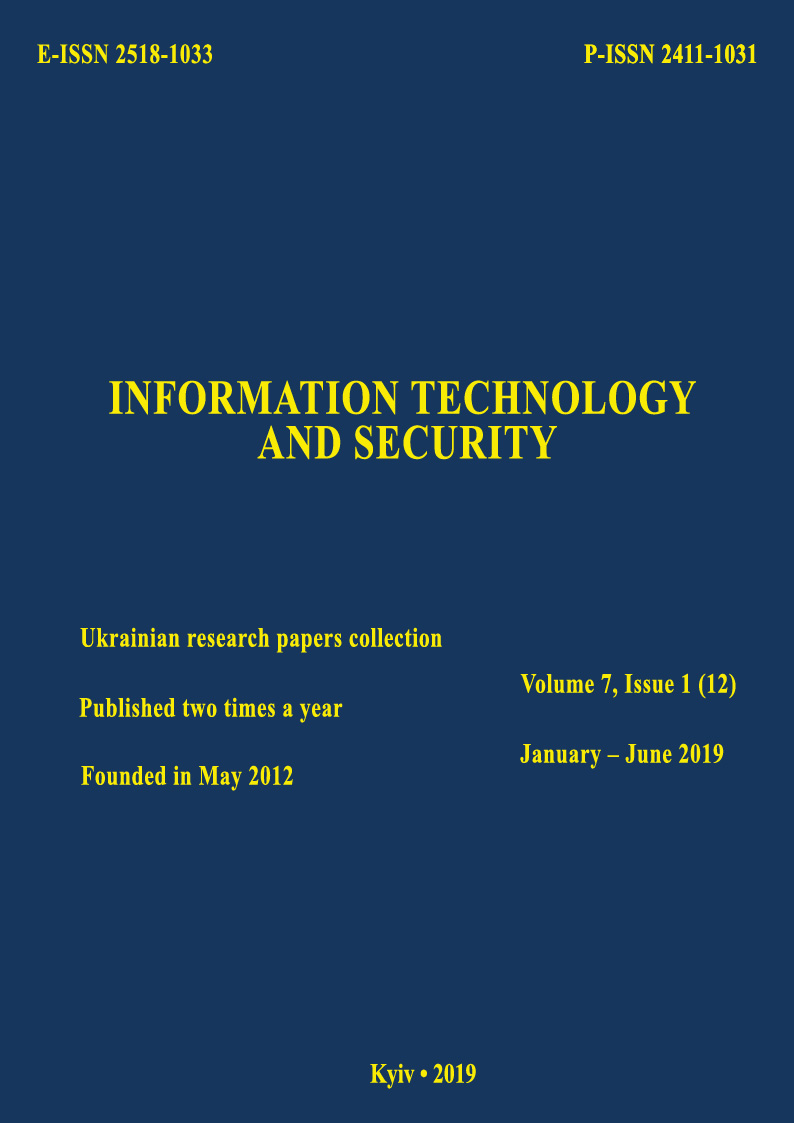Method of determining critical information sources in the global Internet network
DOI:
https://doi.org/10.20535/2411-1031.2019.7.1.184209Keywords:
Hurst index, information agencies, level of stability, information sources, information attack, information explosionAbstract
One of the important segments of the media system in modern conditions is a set of Internet sources. The results of sociological research showed that the number of Internet users continuously increases. The most popular network access devices were mobile phones and tablets. This allowed us to expand the range of services provided through the global network. Consumers of information from the Internet increasingly trust it: first of all, the mass media and social networks. This feature is used, inter alia, for manipulative purposes during the conduct of information wars and attacks to suggest false information to users. The work of the media system involves a complex process of bringing information messages in various formats to almost any person without external participation. In this case, for the functioning of the Internet media, usually, it is necessary only to create and maintain a site that doesn't require significant financial costs, as for traditional media. The server can be located anywhere in the world and registering as a mass media requires an application and a little bit of money. Such conditions of creation and functioning allow exerting external influence on the work of the mass media system on the Internet. In this paper, the stability of mass media sources is investigated and proposed a method that can identify unstable sources, which are likely to be used as a tool for manipulating people minds during information wars. There are 4 types of processes occurring with information sources during their life cycle: the source publication process was almost unchanged, a rapid decrease in the number of publications by the source almost to its stop, the short-term increase in the number of publications by the source, the increase in the number of publications by the source, which was held on a permanent basis.
References
V. Palchuk, “Modern features of the development of content monitoring methods and content analysis of information flows”, Academic Papers of Vernadsky National Library of Ukraine, iss. 48, pp. 360-374, 2017. doi: 10.15407/np.48.506.
S. P. Rastorguev, “Information War. Problems and models”, in Existential mathematics. Moskow, Russia: Helios ARV, 2006.
S. P. Rastorguev, Mathematical models in the information confrontation (existential mathematics). Moskow, Russia: ANO TsSOiP, 2014.
D. V. Lande, and V. O. Dodonov, “Nonlinear Properties of the Multi-Aggregation Model for the Distribution of News”, Information Technology and Security, vol. 4, iss. 2 (7), pp. 80-92, July-December 2016.
A. G. Dodonov, and D. V. Lande, “The method of analytical study of the dynamics of events based on monitoring of web resources of the Internet”, in Proc. International scientific conference Information technologies and security: the bases of providing information security, Kyiv, 2014, pp. 3-17.
A. V. Manoylo, A. I. Petrenko, and D. B. Frolov, State information policy in the context of the information-psychological war. Moskow, Russia: Radio i Svyaz, 2015.
A. V. Manoylo, State Information Policy in Special Conditions. Moskow, Russia: MIPHI, 2003.
G. G. Pocheptsov, Modern information wars. Kyiv, Ukraine: Publishing house “Kyiv-Mohyla Academy”, 2015.
V. I. Averchenkoov, V. V.Spasennikov, M. Yu. Rytov, and E. V. Lexikov, Competitive intelligence: technologies and counteraction. Bryansk, Russia: BSTU, 2014.
J. Fed, Fractals (Synergetics: from the past to the future; № 69). Moskow, Russia: Mir, 1991.
D. V. Lande, A. A. Snarsky, and I. V. Bezsudnov, Internet: Navigation in complex networks: models and algorithms. Moskow, Russia: Librokom (Editorial URSS), 2009.
D. V. Lande, S. M. Braychevsky, and A. N. Grigoriev, “Stability of information sources as one of the parameters of information flows”, in Proc. Іnternational conference Computational linguistics and intellectual technologies, Moscow, 2006. pp. 332-334.
V. O. Khoroshko, and Yu. E. Khokhlachova, “Information war. Mass media as an instrument of information influence on society. Part 1”, Ukrainian Scientific Journal of Information Security, 2016, vol. 22, iss. 3, pp. 283-288. doi: 10.18372 / 2225-5036.22.11104.
Downloads
Published
How to Cite
Issue
Section
License
Copyright (c) 2020 Collection "Information technology and security"

This work is licensed under a Creative Commons Attribution 4.0 International License.
The authors that are published in this collection, agree to the following terms:
- The authors reserve the right to authorship of their work and pass the collection right of first publication this work is licensed under the Creative Commons Attribution License, which allows others to freely distribute the published work with the obligatory reference to the authors of the original work and the first publication of the work in this collection.
- The authors have the right to conclude an agreement on exclusive distribution of the work in the form in which it was published this anthology (for example, to place the work in a digital repository institution or to publish in the structure of the monograph), provided that references to the first publication of the work in this collection.
- Policy of the journal allows and encourages the placement of authors on the Internet (for example, in storage facilities or on personal web sites) the manuscript of the work, prior to the submission of the manuscript to the editor, and during its editorial processing, as it contributes to productive scientific discussion and positive effect on the efficiency and dynamics of citations of published work (see The Effect of Open Access).

